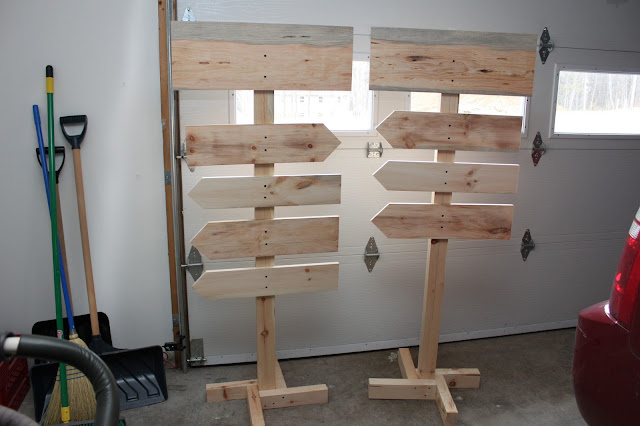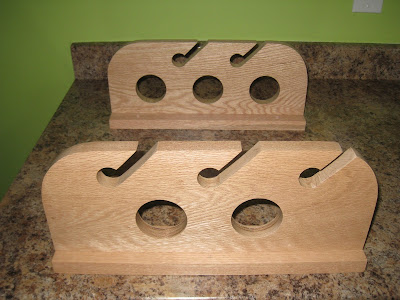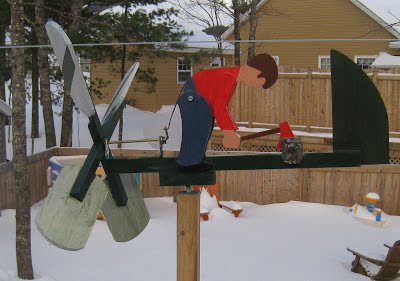My Wife saw a photo somewhere on pinterest of a Lightning McQueen cut-out of plywood that the kids could change the tires...and well...here is our plywood McQueen complete with changeable tires.
I had a leftover
piece of meranti plywood from a parade float lying around that we were using to
shoot hockey balls at instead of denting up the wall.
The image I used as my guide, to draw McQueen, was taken at an angle so I
skewed the image back to "side on" as best I could (you can see the reference image on the plywood in the above photo.) The plywood was previously cut to 4x6. We wanted something that was taller than most
of the kids so I stretched the proportions of the photo so that when scaled up
to size it would fill as much of the plywood as possible.

I drew a grid on the plywood to scale up the photo. Then just used the grid a guide to draw McQueen. I traced the lines with a black marker, cut
him out, and painted him with some Dollar Store craft paint (the red paint was the only colour that did hid the grid).
I put one bolt in
the centre of the tire, counter sunk the bolt in a piece of leftover flooring and set in place with automotive
glue.
The kids loved changing the tires and taking the nuts on and
off. If I did it again I would either
hunt for larger nuts and bolts to use or counter sink the nuts in a piece of
wood. The younger kids had a hard time
screwing the nut back on, but it sure kept them busy!
Ka Chow!






























